Home > Climate News >

Beware the soft climate doomists who sow the seeds of non-solution solution
“If outright doomism is generally too shrill to gain much currency in mainstream climate discourse, what we shall henceforth refer to as “soft doomism” has found its way to the very centre of the conversation.
Soft doomists don’t quite argue for the inevitably of our demise as a species, but they typically imply that catastrophic impacts are unavoidable and that reducing carbon emissions won’t save us from disaster…”
P.S. You might want to order his new book, The New Climate War.
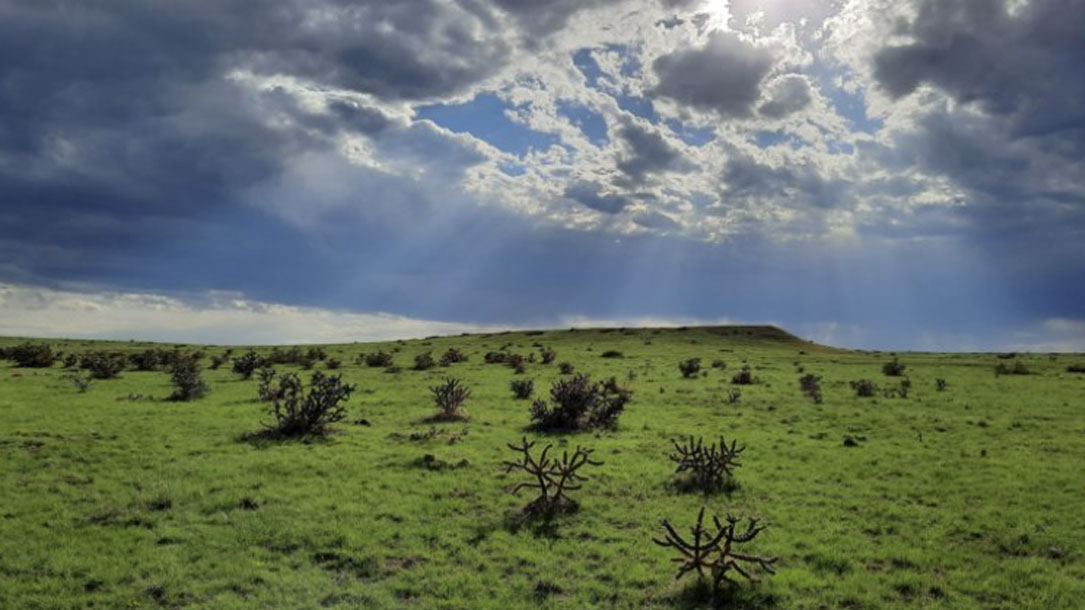
Medford Spring Grassland Conservation
“Grasslands store one-third of the Earth’s carbon, and just one acre of grassland can store an estimated 50 tonnes of carbon or more. Yet, in the U.S., over one million acres of grassland are still converted each year, which has the potential to release 50%-70% of the carbon they hold as carbon dioxide (CO₂).
The Medford Spring grasslands in southeastern Colorado are facing an imminent threat of conversion to cropland given its soils are suitable for farming, and cropland rental rates for winter wheat, milo, sorghum, alfalfa, and other row crops, are more than five times pastureland rates in Bent County, CO. A permanent conservation easement will preserve the grasslands and avoid conversion of the land to farming or development. This will prevent an estimated 190,000 tonnes of CO₂ from entering the atmosphere over the next 50 years. This is the equivalent of almost 208 million pounds of coal burned…”
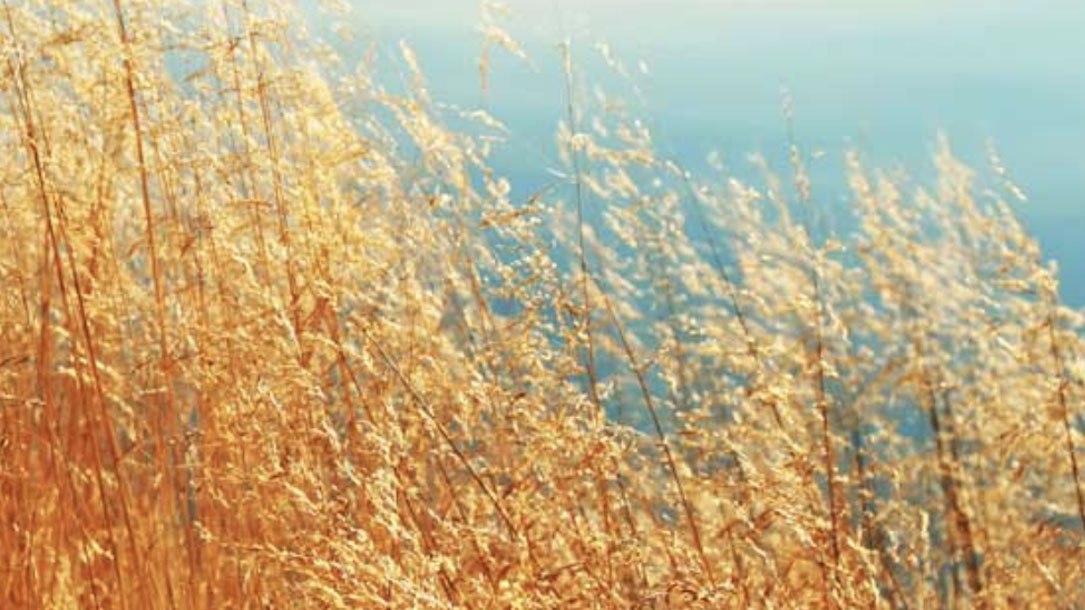
The Climate Action Reserve
“As the premier carbon offset registry for the North American carbon market, the Climate Action Reserve encourages action to reduce greenhouse gas (GHG) emissions by ensuring the environmental integrity and financial benefit of emissions reduction projects.
The Reserve establishes high quality standards for carbon offset projects, oversees independent third-party verification bodies, issues carbon credits generated from such projects and tracks the transaction of credits over time in a transparent, publicly-accessible system.
The Reserve offsets program demonstrates that high-quality carbon offsets foster real reductions in GHG pollution, support activities that reduce local air pollution, spur growth in new green technologies and allow emission reduction goals to be met at lower cost…”

Carbon offset program
Southern Plains Land Trust (SPLT) has enrolled [their] two largest preserves, Raven’s Nest Nature Preserve and Heartland Ranch, under the Climate Action Reserve’s Grassland Protocol. These properties sequester over 10,000 metric tonnes of carbon annually. Sale of these carbon credits creates the ultimate feedback loop: carbon sales generate revenue for SPLT to protect more grasslands, which sequester more carbon and provide refuges for more wildlife.
This is exemplified by SPLT’s partnership with NativeEnergy: a forward sale of carbon credits on the Medford Spring Grassland Conservation area enabled SPLT to add this area to Heartland Ranch, thus increasing the size of this property from 18,000 acres to its current size of 25,000 acres…

Solar installation—Matsuda Farm
Does your land trust have an opportunity to install solar on its lands as part of an overall project, and education strategy?
The Vashon-Maury Island Land Trust is passionate about conserving land to protect the natural ecosystems and rural character of their islands amidst today’s rampant development. They created a video to talk about a solar installation on a farm they own and how it relates to their conservation goals.
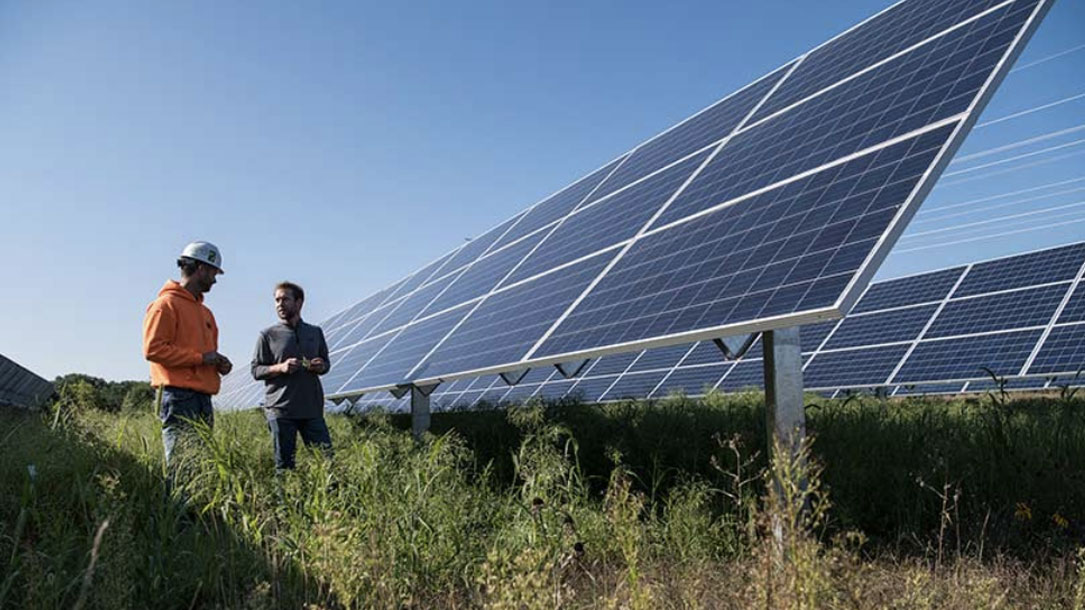
Beneath solar panels, the seeds of opportunity sprout
“On a humid, overcast day in central Minnesota, a dozen researchers crouch in the grass between rows of photovoltaic (PV) solar panels. Only their bright yellow hard hats are clearly visible above the tall, nearly overgrown prarie grasses—which are growing exactly as expected.
Bent over white, square frames, some of the researchers catalog the number and type of native plants growing on a square foot of land. Others press double-forked meters into the ground, measuring the soil moisture below the solar panels and in open ground. Nearby, beekeepers check on the health of local hives.
Their research is part of an ongoing study to quantify the benefits of a new approach to solar installations: low-impact solar development…”

Panel discussion: Integrated Energy Research on Agriculture & Water Challenges
Check out these slides from this detailed panel hosted by the Joint Institute for Strategic Energy Analysis just a few weeks ago…
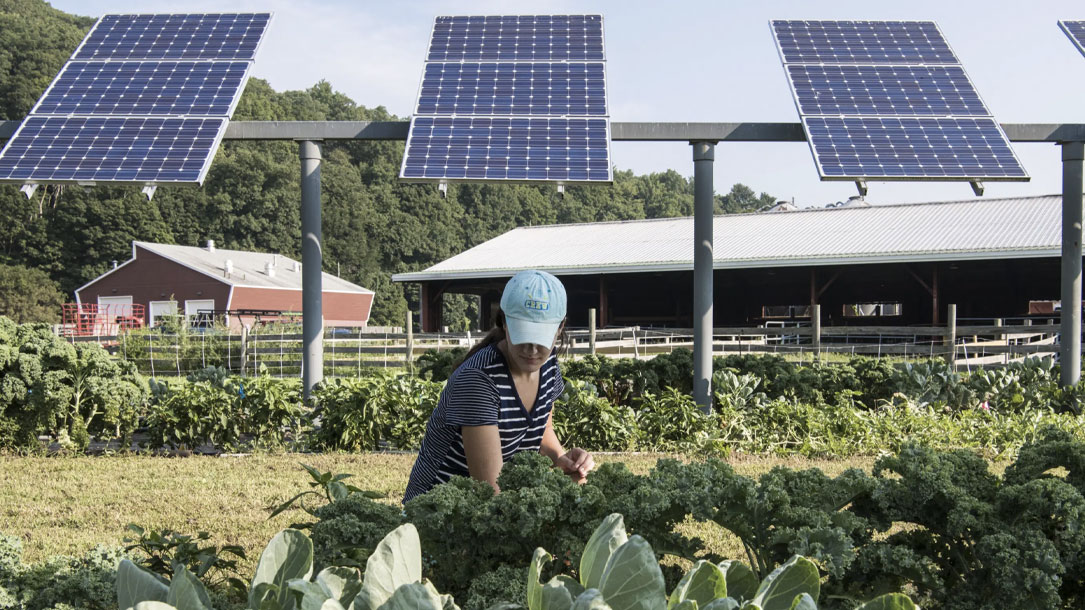
Can farmland fix solar power’s real estate problem?
Rooftop panels are great, but there just isn’t enough viable rooftop space for solar to take a meaningful bite out of carbon emissions in the US. For that, the country needs utility-scale solar farms, which can take up a lot of space—they could occupy an area the size of Connecticut by 2030, according to the National Renewable Energy Laboratory.
There needn’t be a trade-off between crops and electrons, [Chad] Higgins said; they can grow in tandem. Elevated solar panels installed above crops (so-called “agrivoltaics”) can provide an extra income stream for farmers if they lease the space for them to solar companies. And they can yield benefits for the farm itself: the shade can actually boost the yield of vegetables, decrease water consumption, and preserve the ability of soil to absorb CO2 from the atmosphere, according to an ongoing National Renewable Energy Laboratory (NREL) study. The study’s pilot sites have also found ways to combine solar with cattle and goat grazing, as well as apiaries for bees…
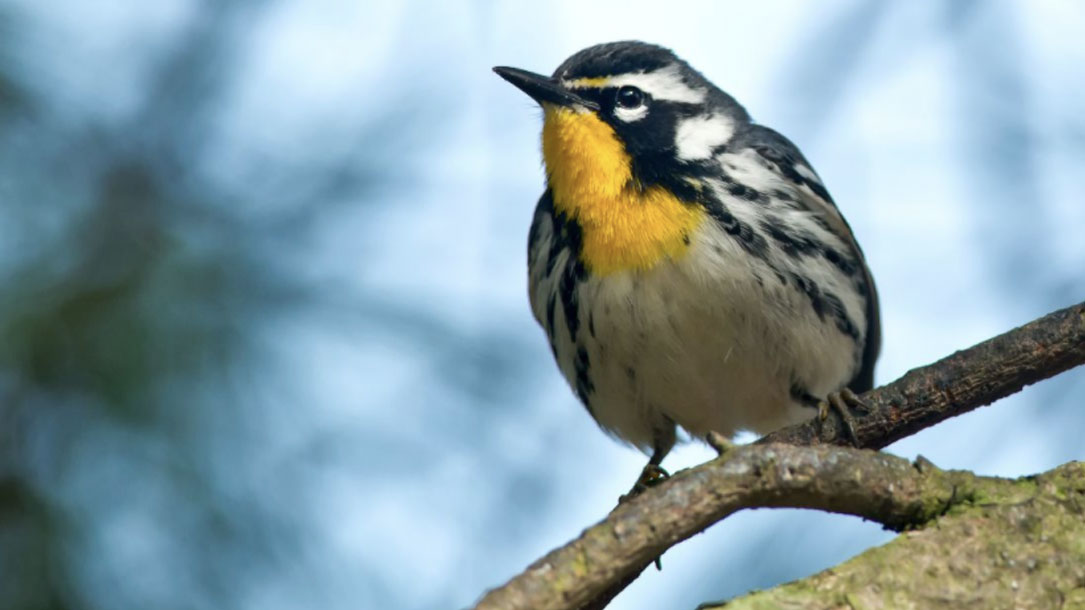
Free 3-week series for land trusts to address climate change
Addressing climate change is a high priority among Wisconsin land trusts. In this three-week series, explore roles your land trust can play in slowing climate change and adapting to changes that we are already seeing on the landscape.
Sessions topics:
Framing the challenges and opportunities; leveraging tools for climate resilience strategies; developing carbon markets
In order to maximize your learning experience, they recommend you sign up and participate in all three sessions. Get the most out of the learning cohort, including resources for learning between sessions.
Session information:
Cost: FREE
Dates: Thursdays February 18, February 25, and March 4, 2021
Time: 1:30–3:00 p.m. CST

Saving Land magazine: Looking to the land to mitigate climate change
Recent reports that the planet had its hottest four years on record highlight the need for accelerated work to keep global warming below critical tipping points. While nations shift to carbon-neutral economies, Earth’s forests, grasslands, wetlands and soils can help reduce atmospheric carbon dioxide (CO2) levels. “Land trust work is more vital than ever,” says Kelly Watkinson, Land and Climate Program manager at the Land Trust Alliance, “because improved conservation, restoration and land management actions enhance the capacity of natural systems to absorb and hold carbon.”












